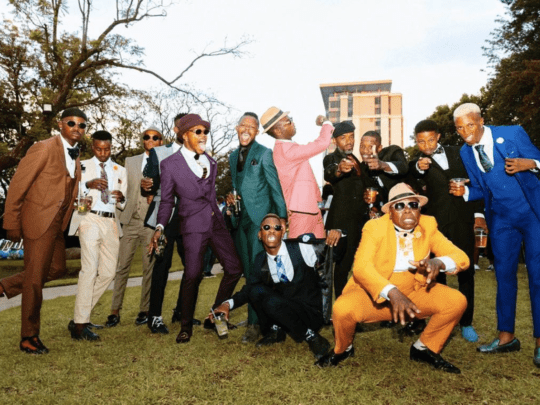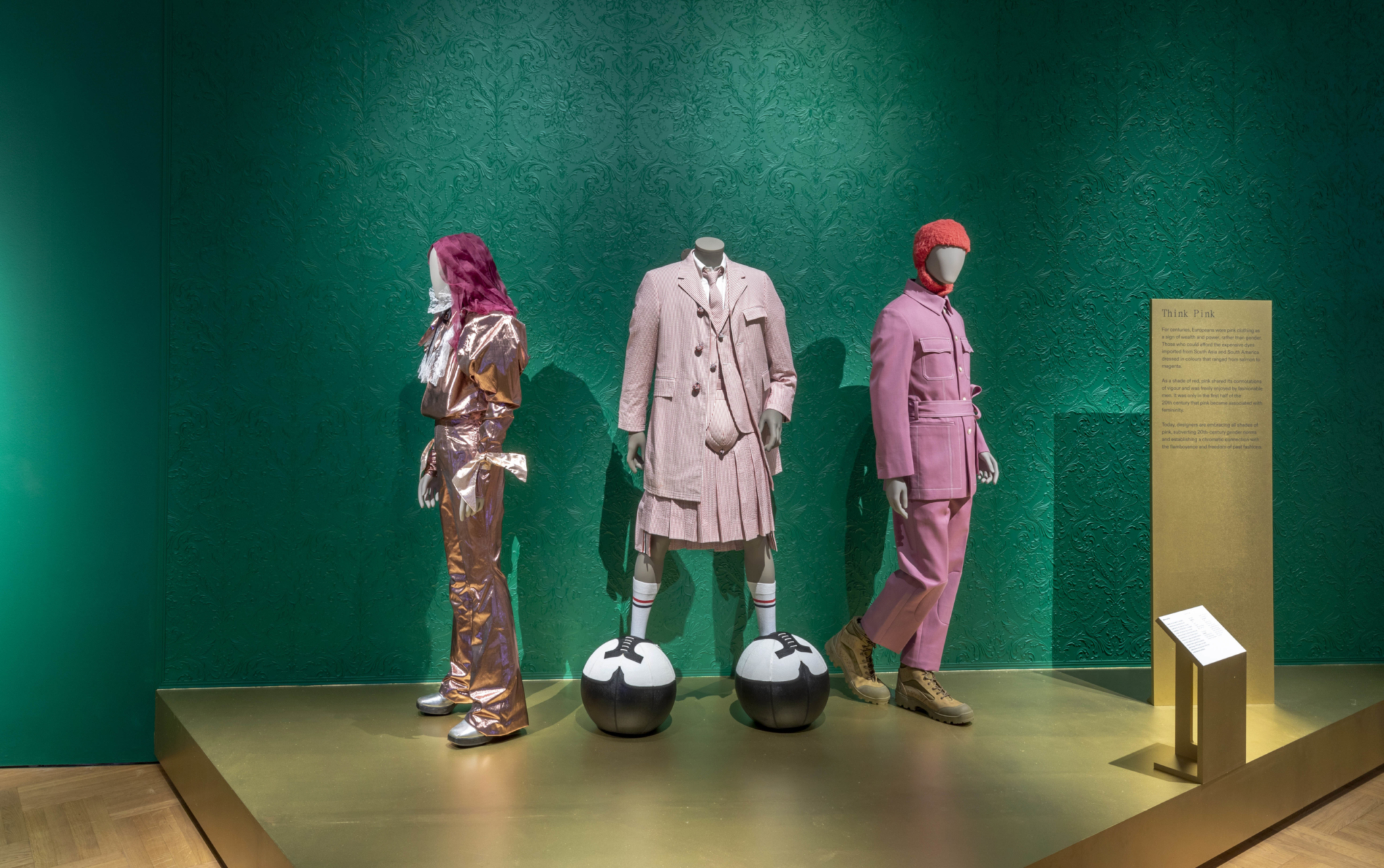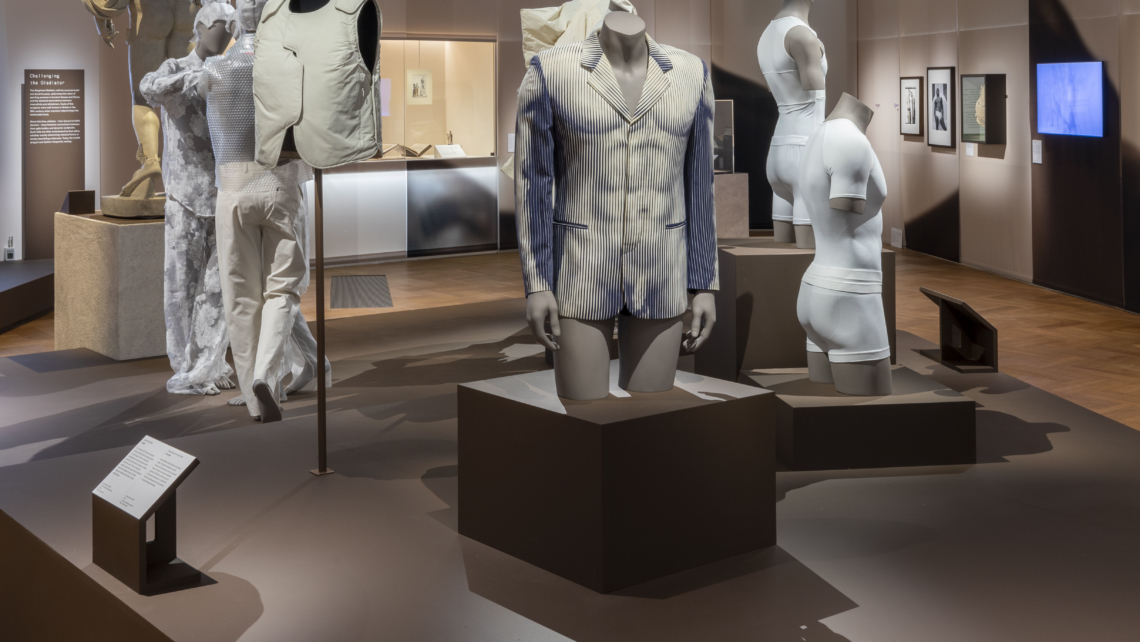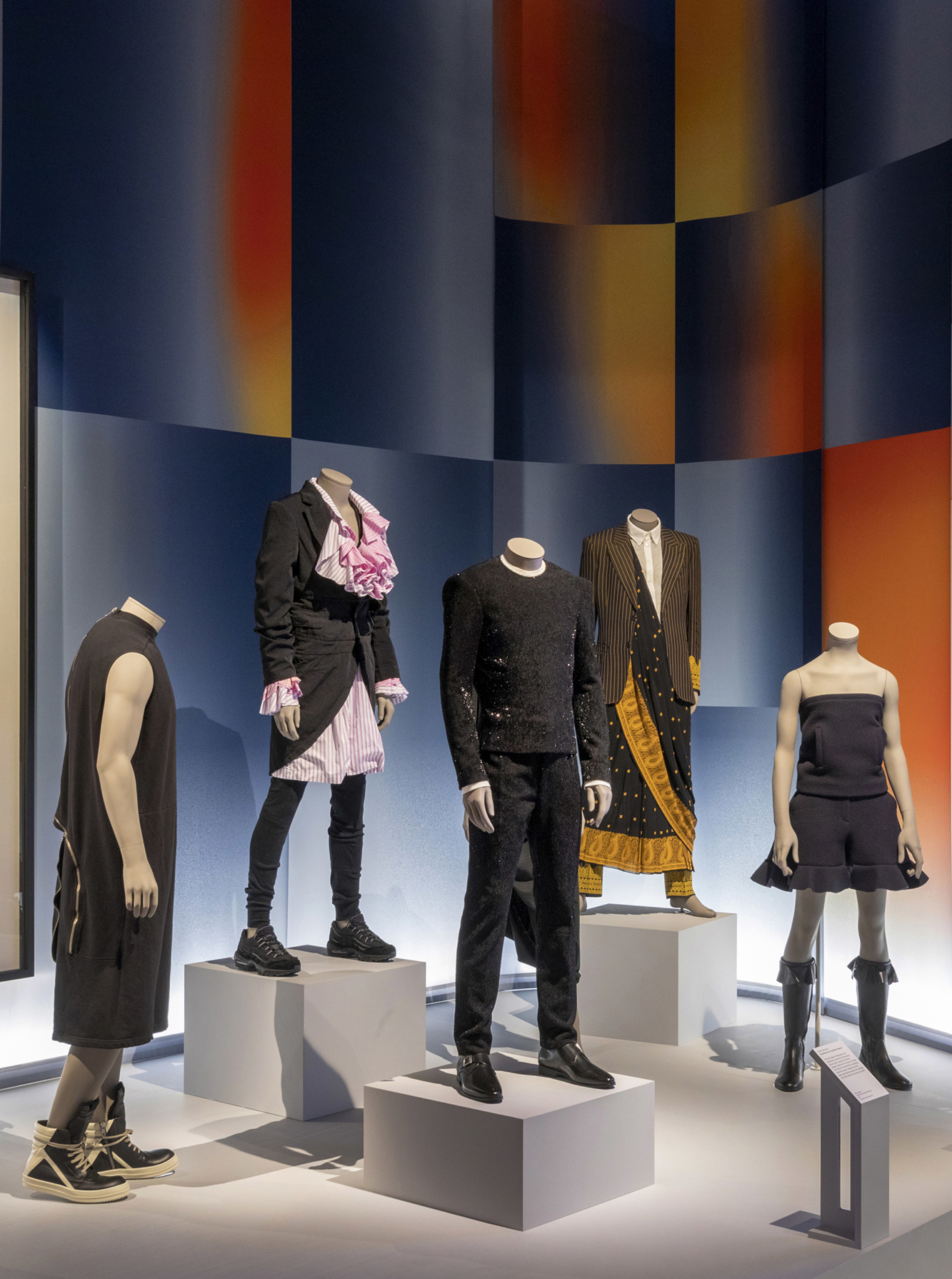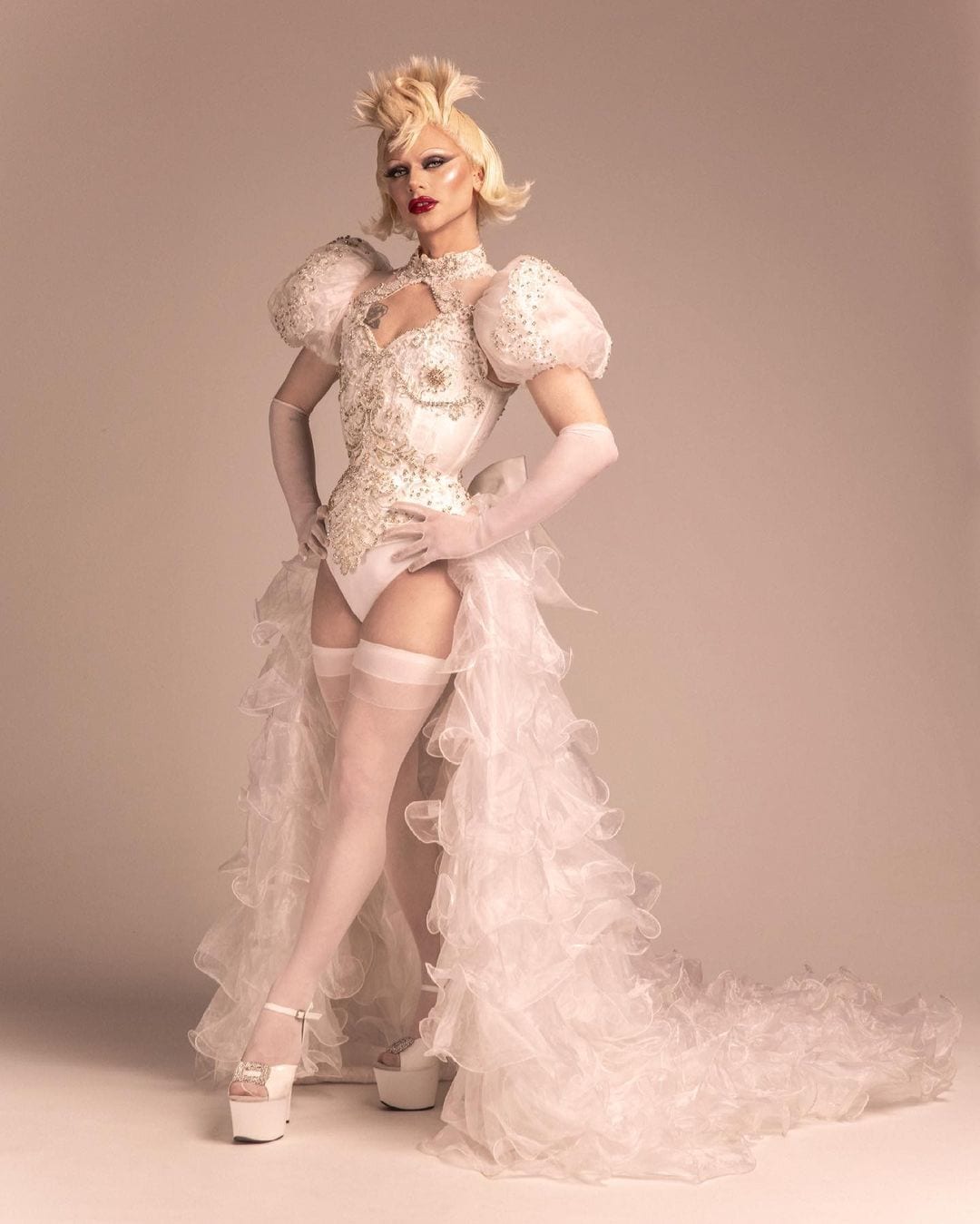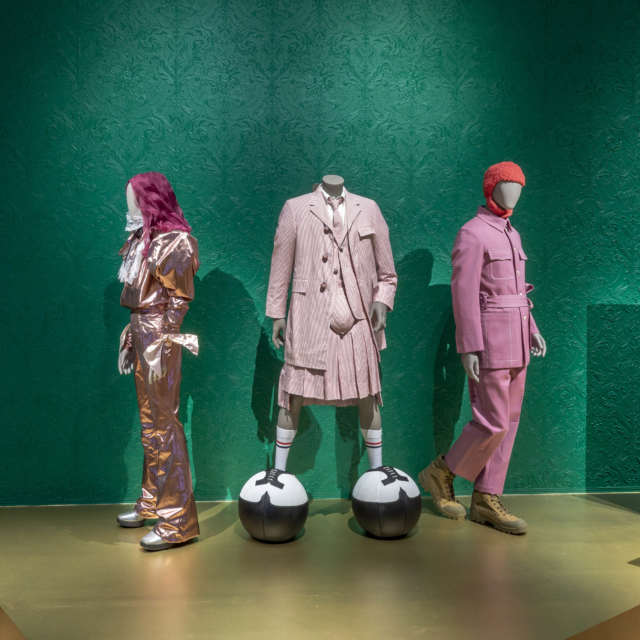Unpicking Menswear: the V&A’s Blockbuster New Show
Men’s sartorial liberation first came to Britain on Carnaby Street in the 1960s. Young men stopped looking like their dads, stopped wearing wool and tweed, and wore paisley prints, shantung silk, a colour palette of pinks, purples, oranges and reds, nipped-in waists, tight, tight pants. Carnaby Street, said critic Nick Cohn, “sold stuff that could once have been worn by no one but queers.”
All this and very much more is celebrated at Fashioning Masculinities: The Art of Menswear, the V&A’s first major exhibition on men’s fashion. Bringing together some 200 looks and artworks, the show is “a clarion call for us to unpick masculinity at the seams and examine the very stuff it is made of,” according to Tristram Hunt, director of the V&A. Co-curated by veteran Claire Wilcox, Rosalind McKever and Marta Franceschini, it runs until November 2022.
Walk into the first of three sections, Undressed, and read the text on the wall – it’s about men’s bodies, how menswear has mimicked classical ideals. You see all these statues and clothes all in white and already you’re thinking, what the f**k does this mean and what is a man and what does all this – a naked trompe-l’oeil Gaultier blazer and Warhol nudes and a wrestler flexed in a bra – what does this mean to men in the street? Men’s version of shopping is still, broadly speaking, going to the gym. Their clothes are their muscle. You want to look all Farnese – I mean the Roman statue of Hercules from the Villa Farnese, totally ripped. Which hints at the irony at the centre of fashion – all this time and money and effort on clothes, when the whole point, really, is to look so desirable you can’t keep them on.
Reviewing the show, fashion writer Charlie Porter makes a nice point about men’s jackets. The technical name for the bottom part, the big below the waist, is “the skirt.” Putin, James Bond, Malcolm X – most men, for all this time – have all been wearing “skirts.” Like all clothes, Porter wrote, men’s jackets are “just drag”.
But menswear has never been about drag fundamentally. It’s been about Being A Man. That – and Looking Rich. And what lies behind all this history, which the show deals with, is Being A Man means Not Looking Feminine. It’s a history of shunning effeminacy.
You see it in the catalogue. Writing on Gaultier’s sari suit (1997), Avalon Fotheringham, curator of the V&A’s Asia Department, explains that Indian dress, like the jama (flowing skirts made of lightweight cotton) was mocked by the British, pitching “civilised” and “masculine” Western dress against “uncivilised” and “feminine” Indian dress, to “control, disenfranchise and oppress Indians” under British colonial rule. The same effect is seen in Japan when, in 1871, the emperor reformed Japanese dress to bring it line with Western fashion, proclaiming: “We should no longer appear before the people in these effeminate [Japanese] styles.”
But that was then. In a quote that opens the show, plucked from Gucci’s AW20 press release, creative director Alessandro Michele says “In a patriarchal society, any possibly reference to femininity is aggressively banned, as it is considered a threat to a masculine prototype that allows no divergencies. The model is socially and culturally built. It seems necessary to suggest a desertion, away from patriarchal plans and uniforms. Deconstructing the idea of masculinity as it has been historically established. Opening a cage.”
In high fashion, menswear is moving closer to womenswear. This is the V&A vision. The show ends with a white wedding dress made of cotton, lace, organza, satin, plastic and rhinestones, designed by Ella Lynch and MistyCouture, and worn by Bimini Bon Boulash, a non-binary model and drag queen, on Ru Paul’s Drag Race UK (2020). The final look is the freedom that most men can’t face, summed up by Bimini when they sang: “Don’t be scared to embrace the femme, whether you’re he, she, or them.”
And so we come back to the “queers.” Fashioning Masculinities is almost entirely a queer exhibition. There’s a Hockney nude, a George Platt Lynes, the original jock strap from 1915, a film made by trans artist Cassils called Tiresias (2011), a man in Greek myth transformed into a woman, and that Bruce Weber ad for Calvin Klein.
We “queers” know. We fail automatically at Being A Man. We’re expelled. And being expelled, we find we are liberated. We see from the outside that Manhood is fashioned, so made.
Oscar Wilde knew, and was basically killed for it: “Truth is absolutely and always a matter of style,” he wrote. Fashioning Masculinities shows that Being A Man is only clothes-deep.

